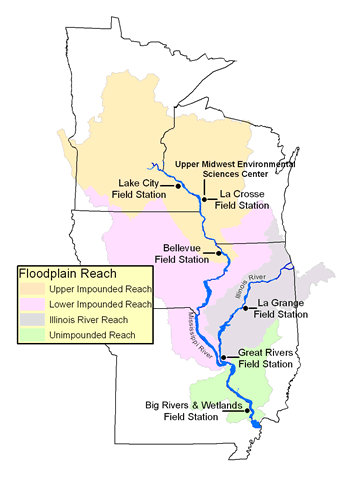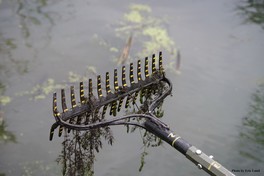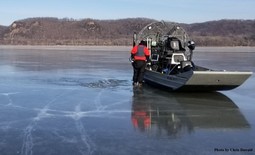|

  
  
|
The northern most field station of the LTRM program is based out of Lake City Minnesota. It is conducted by the Minnesota Department of Natural Resources as part of the Ecological and Water Resources division. Five full-time staff make up the Lake City field station, including a Team Leader, Water Quality Specialist, Fishery Specialist, Vegetation Specialist and a Field Specialist. Two seasonal interns are also hired every year to assist with field sampling. All the monitoring for this field station takes place in Pool 4 of the Mississippi River between Lock and Dam 3 (River Mile 796.9) in Redwing, MN and Lock and Dam 4 (River Mile 752.8) in Alma, Wisconsin. The overall objective of the LTRM program is to detect and assess change in the health and resilience of the UMRS ecosystem by monitoring three key ecological components: fish, vegetation and water quality.
Fish
 The Upper Mississippi River fishery is historically diverse in both recreational and commercial use. Adverse trends in the fish community could have a drastic effect on the region’s economy. The fish component was put in place to monitor and report trends in the fish populations and communities. Fish sampling is completed during three time periods from June to October. A variety of methods are employed including electrofishing, trawling, large and small fyke netting, and large and small hoop netting. Over the history of the program, nearly 1.42 million fish consisting of 74 different species have been sampled in Pool 4. The Upper Mississippi River fishery is historically diverse in both recreational and commercial use. Adverse trends in the fish community could have a drastic effect on the region’s economy. The fish component was put in place to monitor and report trends in the fish populations and communities. Fish sampling is completed during three time periods from June to October. A variety of methods are employed including electrofishing, trawling, large and small fyke netting, and large and small hoop netting. Over the history of the program, nearly 1.42 million fish consisting of 74 different species have been sampled in Pool 4.
|
 Vegetation Vegetation
Since the introduction of locks and dams to the Mississippi and Illinois Rivers in the 1930s, backwaters have expanded and allowed aquatic vegetation to flourish. Aquatic vegetation is a critical part of UMR ecosystem because it provides food, areas to spawn, and shelter for fish, invertebrates and other wildlife. The objective of vegetation monitoring is to determine composition, frequency of occurrence and relative abundance of all submersed, floating, and emergent plants. Approximately 450 sites are sampled during the vegetation growing season from early June to late August.
|
 Water Quality Water Quality
The water quality component’s main purpose is to monitor and report status and trends of the water quality in the Mississippi River and its tributaries. Water quality variables that relate closely to ecosystem function and habitat quality are collected at every sampling site. Water quality monitoring utilizes two types of sampling, fixed and stratified random sampling. Fixed sampling is conducted at fifteen permanent sites in Pool 4 throughout the year and stratified random sampling consisted of sampling one hundred and thirty-five sites quarterly. |





 The Upper Mississippi River fishery is historically diverse in both recreational and commercial use. Adverse trends in the fish community could have a drastic effect on the region’s economy. The fish component was put in place to monitor and report trends in the fish populations and communities. Fish sampling is completed during three time periods from June to October. A variety of methods are employed including electrofishing, trawling, large and small fyke netting, and large and small hoop netting. Over the history of the program, nearly 1.42 million fish consisting of 74 different species have been sampled in Pool 4.
The Upper Mississippi River fishery is historically diverse in both recreational and commercial use. Adverse trends in the fish community could have a drastic effect on the region’s economy. The fish component was put in place to monitor and report trends in the fish populations and communities. Fish sampling is completed during three time periods from June to October. A variety of methods are employed including electrofishing, trawling, large and small fyke netting, and large and small hoop netting. Over the history of the program, nearly 1.42 million fish consisting of 74 different species have been sampled in Pool 4. Vegetation
Vegetation Water Quality
Water Quality